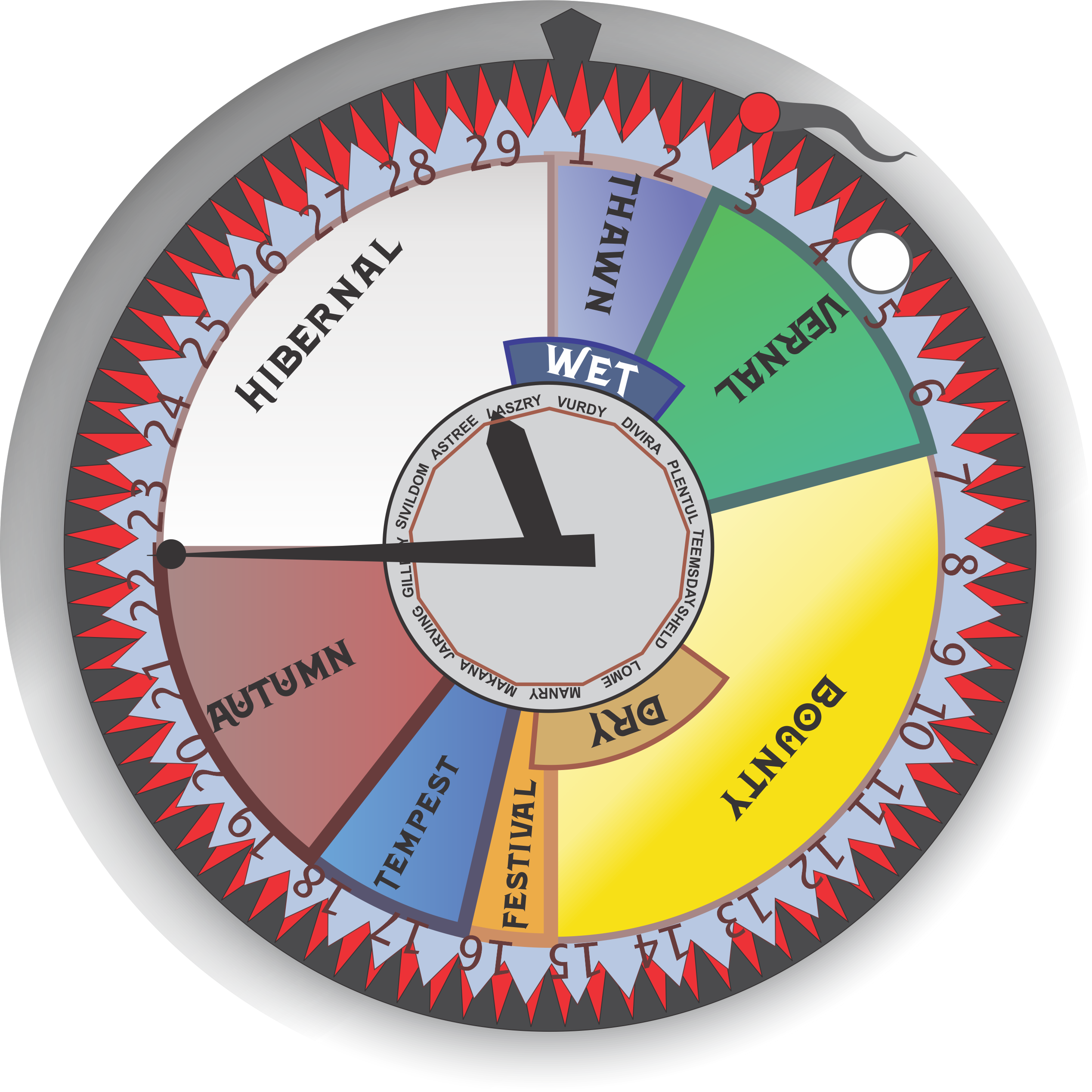Calendars of Urth
Thirteen Day Week
The days of the week are named after the thirteen Old Ones, the spirits of generosity and nurture that go unseen in the world. Each spirit has a gift they provide. The first four are the basics that nomads, hunters, and gatherers needed. The middle five are the guardians of the village. The last four are the mentors of the city-state. The thirteen days follow this order, which is also the order of the altars along a Benefactory.
NOTES:
Days of rest all end in -y. This includes two traditional days of rest, two market days, and the day of Thanks. For the well-to-do, the two market days are for them to shop at markets, not work them. For most people, market days are work days, probably to sell their own goods at the markets.
Traditional market days end in -day.
There are eight workdays,. Most people work 10 out of 13 days, counting market days as work days.
What Everyone Knows:
| WEEKDAY | PURPOSE | GIFT of the SPIRIT | SYMBOLS | SPIRIT |
|---|---|---|---|---|
| Virdy | Day of Thanks | Fertility of Bloodline | Blood | Vurel |
| Purraba | Workday | Water and Fertile Lands | Water | Purhreer |
| Urmaterra | Workday | Plentiful Resources | Wood | Plentum |
| Teemsday | Market | Abundance of Animals | Bone | Teemagra |
| Difeena | Workday | Shelter / Care / Safety | House | Sheldeevf |
| Halomma | Workday | Harvestry / Unearthing | Wheat | Loamalkamere |
| Ovmannah | Rest | Food, Cooking, Eating | Salt | Manna |
| Makeena | Workday | Build and Craft | Cloth | Maiken |
| Jarva | Workday | Carriers, Merchants, Travellers | Wheel + Crate | Jarvies |
| Gildday | Market | Craftmanship / Technology | Compass + Plumb | Guilder |
| Sivila | Workday | Politics, Detritus, Militia | Shield + Broom | Sewird |
| Astreeya | Workday | Knowledge, Education, Language | Pen + Ink | Skribben |
| Lazurah | Rest | Arts, Socials | Masks + Stein | Phagulen |
Traditional market days end in -day.
There are eight workdays,. Most people work 10 out of 13 days, counting market days as work days.
What Everyone Knows:
- The first day is one of thanks. Celebrations, religious observances, walking a benefactory, and acts of benevolence are typical for these days.
- Jarving is a workday, but also considered a well-traveled day. Not coincidentally, the following day is the major market-day, so people would travel to bring their goods to markets.
- A busy market is said to be teeming, after the Old One, Teemagra, who provides the abundance of animals and flora.
Type
Guide, Generic




Comments